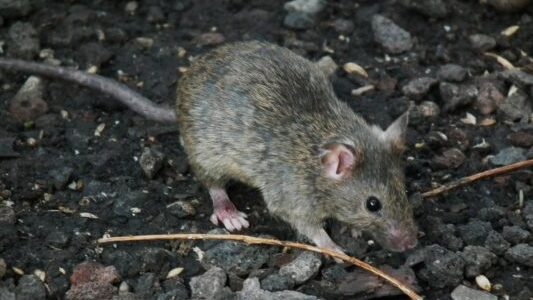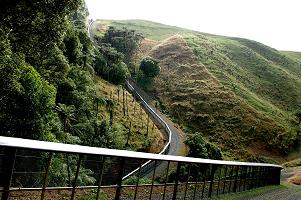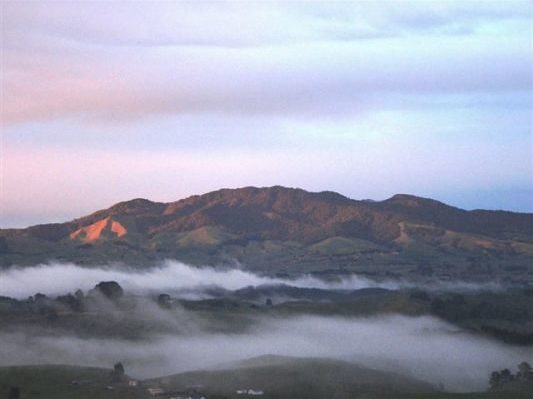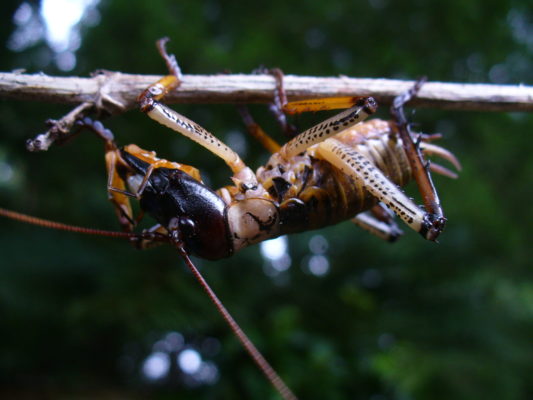When there’s a mouse in your pantry you notice – but in the wider environment they’re common and inconspicuous. It’s difficult to know what impact mice have in a forest or wetland environment because mice are overshadowed by – and food for – their bigger predator rivals, including rats, stoats and feral cats. So should we be worried about mice?

When sanctuaries are fenced and bigger predators removed, mice can become a lot more numerous and visible. It’s an opportunity to see how mice interact with the forest ecosystem, when they’re not, themselves, hiding from mammal predators. Research into the role of mice in New Zealand forests doesn’t appear to have hit the peer-reviewed scientific journals as yet – but both Landcare Research scientists and post-graduate research students are currently investigating mice and outlines of their research projects are available online through their respective research institutions.

A team from Landcare Research, Waikato, led by John Innes and Deb Wilson has been studying mice at Maungatautari fenced sanctuary since 2011 and an outline of their project is available online through the inhouse vertebrate pest research newsletter Kararehe Kino.
“Maungatautari Reserve in the central Waikato is the largest pest-free area in mainland New Zealand, with a 47 km pest-fence excluding pests from 3 300 ha of native forest. In 2008 all 13 species of local pest mammals except mice were eradicated from this wildlife sanctuary. Mice became extremely scarce for a while, but in February 2012 the Maungatautari Ecological Island Trust (MEIT) made the difficult decision to stop targeting them because of the high expense of mouse monitoring and removal in such a large area… Waipa District Council administers the reserve, and Waikato Regional Council has supported the mouse research with funding, over and above its general support for MEIT.”
The researchers have been investigating the density, behaviour and impacts of mice in and around the reserve.
“The research team studied the density of mice and their impacts on biodiversity in two adjacent forest blocks: one separately fenced, privately owned site (Q block), where mice reached 20–30 per hectare until they were eradicated in August 2013; and an adjacent part of the main reserve (M block), where mice were initially absent but have increased freely since 2012, a virtual ‘treatment switch’ between sites.”
Main impact

“The researchers discovered that the main impact of mice was on ground-living invertebrates. There were about twice as many litter invertebrates (all kinds combined) in the block with no or few mice, including twice as many beetles, wētā and spiders, when counted and considered as separate individual groups.”
What’s more, mice seem to have a preference for ‘big and juicy’ rather than making a meal of smaller individuals.
“…on average, beetles and wētā were about half as large in the block with mice, showing that mice removed many larger individuals.”
It seems that mice are also fond of eating earthworms – a result the researchers weren’t expecting.
“… there were also significantly fewer earthworms in the leaf litter and surface soil layers when mice were abundant. Mice are known from other studies to eat earthworms that feed on the surface of the soil at night, when mice are also active.”
Mice are also great seed-eaters, so were seed/seedlings – and therefore forest regeneration noticeably affected? Apparently not. The researchers weren’t able to detect any effect of the presence of mice on seedlings or fungi. Perhaps it was a case of ‘why bother with vegetables when there is plenty of ‘meat’ (or at least invertebrate protein), on offer. Land snails appeared to be unaffected too.
What about birds eggs? With the threat of tree-climbing ship rats removed, did mice take to the trees in search of nests?
“They showed that mice would eat small bird eggs artificially placed in used nests on the ground, but an attempted study of ‘live’ nests did not find enough of them to resolve whether mice will prey on eggs in these nests. Mice do climb trees, however. Across 20 sites in Maungatautari Reserve, mice were detected in 93% of chew-track devices at ground level, 35% of devices at shrub height (1.6 m above ground) and 17% of devices at subcanopy height (5 m). In a paired trial at nearby Te Tapui Reserve, where all pest mammals in the Waikato region are present, only one mouse was detected at one ground device, while ship rats and possums were found at all levels, including in the canopy (about 8 m).”

Having mice in your otherwise predator-free sanctuary isn’t a particularly good look from a public point of view, but the researchers postulate that there may be at least one advantage in their ongoing presence at Maungatautari.
“The researchers could conceive of only one reason why it may be good to have mice in a sanctuary: mice may in the short term distract larger predators, if any do manage to invade, from feeding on threatened species such as saddlebacks and tuatara. However, it is obviously important that such threatening invaders are rapidly removed.”
Maungatautari is also the research location for University of Waikato student Cat Kelly who has been involved with the Landcare Research project team through her Masters research work. Her Masters Degree thesis is available through the University of Waikato Research Commons webpages (https://researchcommons.waikato.ac.nz/handle/10289/10531) and looks specifically at the use of vertical space (climbing trees) by mice and their impact on bird nesting success.
“At Maungatautari – a pest-fenced reserve in the Waikato, New Zealand, mice remain as the sole invasive mammal following extensive eradication programmes. When left on their own, mouse populations are known to greatly increase. On some offshore islands in the South Atlantic and sub-Antarctic, their diet has been shown to include bird eggs and chicks, and on other islands they have used resources that were previously unavailable to them (by predator or competitive exclusion). Therefore, the aims of the present study were to examine how mice; (1) use vertical space in the presence and absence of other mammalian predators and (2) impact bird nesting success when they are the sole predator.”
The full thesis can be read at:
Kelly, C. L. (2016). House mouse (Mus musculus) use of vertical space and impact on bird nesting success (Thesis, Master of Science)
The article in Landcare Research’s vertebrate pest research newsletter Kararehi Kino is also freely available:
Impacts of Mice in Waikato Forests

